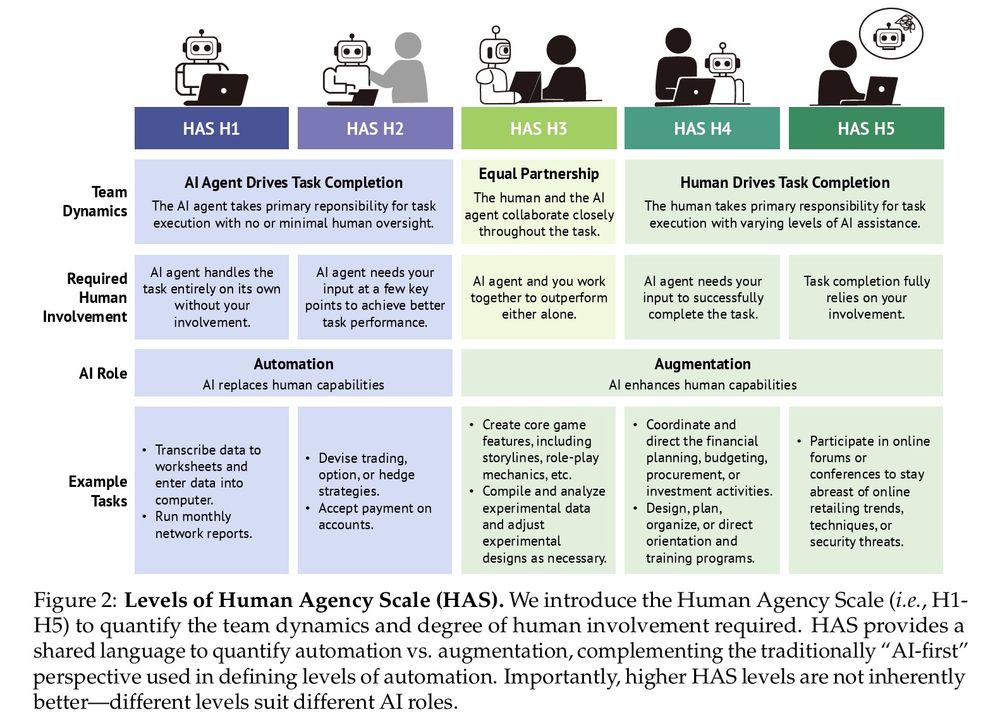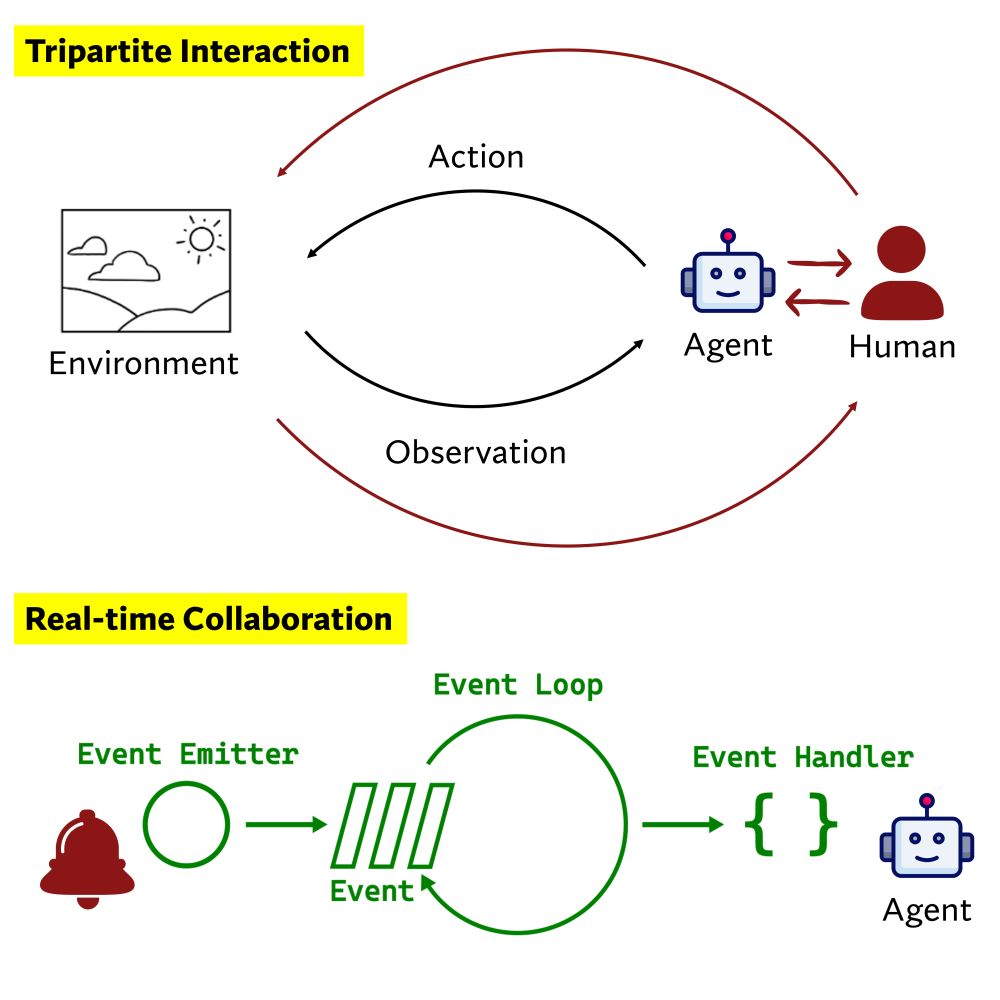https://cs.stanford.edu/~shaoyj/
👇 To get notified when it’s live or request an occupation we missed (see Appendix D.1 in our paper), drop a comment below.
forms.gle/ocDWGhRDS8y6...

👇 To get notified when it’s live or request an occupation we missed (see Appendix D.1 in our paper), drop a comment below.
forms.gle/ocDWGhRDS8y6...
Read our blog post: futureofwork.saltlab.stanford.edu

Read our blog post: futureofwork.saltlab.stanford.edu
Mapping the Human Agency Scale across jobs shows which roles AI can’t replace. Currently, only Mathematicians & Aerospace Engineers have most AI expert ratings that fall into H5 (Human Involvement Essential).

Mapping the Human Agency Scale across jobs shows which roles AI can’t replace. Currently, only Mathematicians & Aerospace Engineers have most AI expert ratings that fall into H5 (Human Involvement Essential).
We suggest that AI agent R&D and products account for them for more responsible, higher-quality adoption.

We suggest that AI agent R&D and products account for them for more responsible, higher-quality adoption.
From transcript analysis, the top collaboration model envisioned by workers is “role-based” AI support (23.1%) - utilizing AI systems that embody specific roles.

From transcript analysis, the top collaboration model envisioned by workers is “role-based” AI support (23.1%) - utilizing AI systems that embody specific roles.
We introduce the Human Agency Scale: a 5-level scale to capture the spectrum between automation and augmentation--where technology complements and enhances human capabilities.

We introduce the Human Agency Scale: a 5-level scale to capture the spectrum between automation and augmentation--where technology complements and enhances human capabilities.
Alarmingly, 41.0% of YC companies are mapped to Low Priority and Automation “Red Light” Zone.

Alarmingly, 41.0% of YC companies are mapped to Low Priority and Automation “Red Light” Zone.
Transcript analysis reveals top concerns: (1) lack of trust (45%), (2) fear of job replacement (23%), (3) loss of human touch (16.3%)

Transcript analysis reveals top concerns: (1) lack of trust (45%), (2) fear of job replacement (23%), (3) loss of human touch (16.3%)
We collaborate with economists to develop an audio-enhanced auditing framework.
- 1500 domain workers from 104 occupations shared their desires.
- 52 AI agent researchers & developers evaluated today’s technological capabilities.

We collaborate with economists to develop an audio-enhanced auditing framework.
- 1500 domain workers from 104 occupations shared their desires.
- 52 AI agent researchers & developers evaluated today’s technological capabilities.
The release won't be possible without the generous support from US Navy Research, NSF, Google, and Microsoft Azure!
The release won't be possible without the generous support from US Navy Research, NSF, Google, and Microsoft Azure!
Read our preprint to learn more details: arxiv.org/abs/2412.15701

Read our preprint to learn more details: arxiv.org/abs/2412.15701
github.com/SALT-NLP/col...

github.com/SALT-NLP/col...
Contributed agents will be deployed on our platform to study their interaction dynamics with real users. A great chance to distribute your agent in the wild!
Contributed agents will be deployed on our platform to study their interaction dynamics with real users. A great chance to distribute your agent in the wild!
Besides backend primitives, we also open-source our UI to facilitate human-agent interaction research. The UI resonates design of OpenAI canvas with side-by-side chat panel and a shared workspace for human and agent, but can do more!

Besides backend primitives, we also open-source our UI to facilitate human-agent interaction research. The UI resonates design of OpenAI canvas with side-by-side chat panel and a shared workspace for human and agent, but can do more!
github.com/SALT-NLP/col...

github.com/SALT-NLP/col...
Contributed agents will be deployed on our platform to study their interaction dynamics with real users. A great chance to distribute your agent in the wild!
Contributed agents will be deployed on our platform to study their interaction dynamics with real users. A great chance to distribute your agent in the wild!
Besides backend primitives, we also open-source our UI to facilitate human-agent interaction research. The UI resonates design of OpenAI canvas with side-by-side chat panel and a shared workspace for human and agent, but can do more!

Besides backend primitives, we also open-source our UI to facilitate human-agent interaction research. The UI resonates design of OpenAI canvas with side-by-side chat panel and a shared workspace for human and agent, but can do more!

